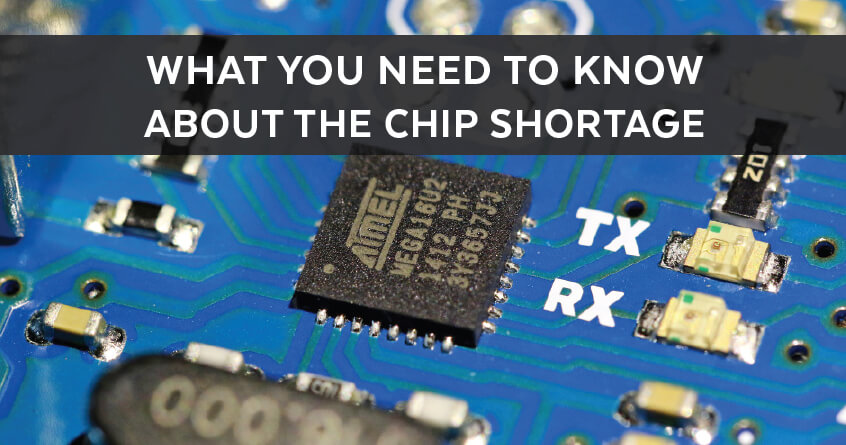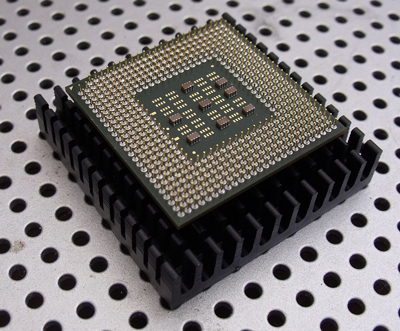We seem to be living in Biblical times. Ice storms in Texas, fires at two chip-making factories in Japan, a 7.3 magnitude earthquake in northeast Japan in February, and the maritime disaster in the Suez canal—not to mention a year-long global pandemic—have all contributed to a severe shortage of semiconductors.
But what are semiconductors and why are they so important?
What is a semiconductor?
According to Investopedia:
Found in thousands of electronic products, a semiconductor is a material which conducts electricity more than an insulator but less than a pure conductor. In broad terms, semiconductors can be classified into a small number of categories including memory chips, microprocessors, and integrated chips.¹
For clarity’s sake, it is important to know that the terms semiconductor, chip, microchip, integrated circuit (IC), and silicon chip are synonymous. Chips are extremely small objects. They are built on thin wafers that measure as little as 1/16 square inches and are 1/30 of an inch thick. Larger chips are approximately the size of a postage stamp and can contain millions of transistors.
So, what is all the fuss about?
The semiconductor chip is a crucial component in thousands of devices and machines such as computers, mobile phones, smartphones, digital cameras, TVs, washing machines, refrigerators, LED lights, video gaming systems, and even automobiles. Without this tiny piece of technology, our lives would be infinitely less comfortable.
In short, this chip shortage is a big deal!
The chip shortage has caused shift cuts at a Ford auto plant in Kansas and a General Motors plant in Brazil, has put a premium price on the PlayStation 5 and Xbox Series X video game systems, and has even forced Samsung to cancel their latest version of the Galaxy Note smartphone.
Having to spend more for cars and electronics—or having to wait a considerable amount of time to get them is one thing. However, there is a bigger picture. The collapse of the semiconductor supply chain, along with the increasing demand for cars and electronics is exacerbating the trade war between the U.S. and China. And here is where it gets more serious: Semiconductors are vital for the military, telecommunications, and AI industries.
Can’t we just make more chips?
The semiconductor industry is dominated by companies from five countries: The United States, Taiwan, South Korea, Japan, and the Netherlands. The chips themselves are built in fabrication plants called “fabs.” Because chips are ultrasensitive to things like static electricity, temperature variations, and even tiny specks of dust, these fab environments must be highly controlled. Fabs cost billions to build (in the range of $10 billion a piece), and take from two to five years to construct. So, if a shortage comes, you cannot just quickly build a factory and slap together a few production lines.
In today’s world, raw materials for chips come from Japan and Mexico, and most chips are fabricated in China. The U.S. makes only 12 percent of the world’s semiconductors. To help the U.S. to gain more chip independence, Intel recently unveiled plans for two new fabs in Arizona—but that is $20 billion and at least two years down the road.
How does the pandemic fit into the chip shortage?
When COVID-19 started to shut down the global economy, most economists predicted that consumer spending on non essential goods would drop dramatically. So, many industries began to curtail production. In particular, the automotive industry decided to cut back building vehicles and to order fewer chips that are needed to make cars run.
However, consumers had something else in mind. While many people did lose their jobs and others began to work from home, they found they had a lot of time on their hands. Not being able to go out to the movies, dine in a restaurant, plan parties with friends, or vacation, they spent their money on things to do at home. They purchased TVs, computers, video game systems, etc. in unexpected droves. And to everyone’s surprise, consumers still wanted to buy cars. By the time the auto industry realized this, the chips were gone and there was a lead time of a year or more.
Are the chip companies benefiting from the chip shortage?
This is not an easy question to answer. Certainly, chip companies are benefiting from being able to sell their products at a higher price; however, most of these companies are contracted into large, long-term chip supply deals that they cannot easily change the terms of. The Washington Post states:
The biggest winners may be the companies that make the expensive and highly complex manufacturing equipment used to make semiconductors, such as California-based Applied Materials and Lam Research, and Japan-based Tokyo Electron.²
So, who is going to pay the price of this shortage?
The consumer, of course. Chips are used everywhere for thousands of things—and wait times and prices are going up. High-end computers and gaming systems are now being auctioned on eBay for up to twice their retail value. Wait times for PlayStations and Xboxes are increasing and cars are becoming more expensive and harder to come by. The clear loser in this situation is the consumer.
What happens from here?
There will be no quick fix for the chip shortage. Experts estimate it will surely continue throughout the year and maybe even into 2022. Intel’s two new plants will create over 3,000 construction jobs and when the fabs are completed, 3,000 permanent high-wage jobs. The new plants will manufacture 7nm range and smaller semiconductors which will put the company into direct competition with Taiwan Semiconductor Manufacturing Company (TSMC) and Samsung. Per Intel’s new CEO, Pat Gelsinger:
We are setting a course for a new era of innovation and product leadership at Intel. Intel is the only company with the depth and breadth of software, silicon and platforms, packaging, and process with at-scale manufacturing customers can depend on for their next-generation innovations. IDM 2.0 [Intel’s new Integrated Device Manufacturing strategy] is an elegant strategy that only Intel can deliver.—and it’s a winning formula. We will use it to design the best products and manufacture them in the best way possible for every category we compete in.³
And other good news is that the U.S.’s Global Foundries is ramping up its production of 14nm, 22 nm, and 28 nm wafers that are used in the automotive industry and many other Internet of Things (IoT) devices.
The goal of bringing cell independence to the United States is a big thing—especially in the light of our troubles with China. While steps are being taken, this effort will take time. At a recent virtual meeting between The White House and prominent American CEOs, President Biden stated:
We’ve been falling behind on research and development and manufacturing. We have to step up our game.⁴
The Bottom Line
The road to chip independence will be a long one. Our best advice to consumers at this point is to make needed purchases now instead of later.
John Neuffer, president and CEO of the Semiconductor Industry Association recently released a statement that sums things up:
In the short term, government should refrain from intervening as industry works to correct the current supply-demand imbalance causing the shortage. The role we see for government is to ensure the long-term strength and resilience of America’s semiconductor supply chain by acting now to invest in domestic chip manufacturing and research.⁵
____________________________________________
Resources
1 Technopedia: The Main Types of Chips Produced by Semiconductor Companies
2 The Washington Post: What you need to know about the global chip shortage
3 Forbes: Intel To Launch Two New Fabs In Arizona And Why This Is Important
4 Politico: Why the president can’t quickly solve the computer chip shortage
5 Politico: Why the president can’t quickly solve the computer chip shortage

